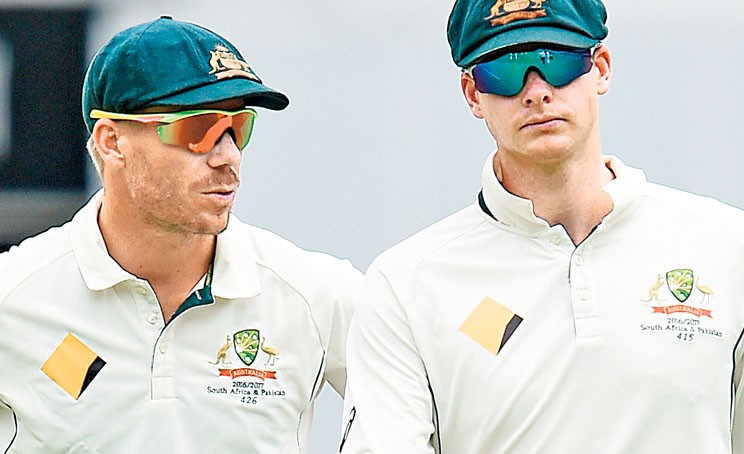

The Australian cricket team is passing through its worst phase. It has lost not only the Test series against South Africa, but also captain Steve Smith, vice-captain David Warner and batsman Cameron Bancroft, who have been banned for their involvement in the ball-tampering scandal in the third Test at Cape Town.
On the third day of the third Test at Cape Town, Bancroft was caught by television cameras trying to alter the condition of the ball with a "tape" which, it was later found out, was sandpaper. Bancroft admitted ball-tampering and Smith revealed it was discussed by the team management during the lunch break.
After the incident, Smith and Warner not only received one-year ban from Cricket Australia (CA) but have also lost their Indian Premier League (IPL) contracts worth up to $2 million each.
The Board of Control for Cricket in India (BCCI) decided to ban Smith and Warner with immediate effect.
Smith and Warner were the captains of Rajasthan Royals and Hyderabad Sunrisers, respectively.
Warner was the most important player when Sunrisers Hyderabad won their maiden IPL title in 2016. The left-handed opener has been among the top five run-getters in the IPL in the past four years, claiming the Orange Cap twice in the past three seasons.
Australian coach Darren Lehmann has also resigned from his job. Though Lehmann had been cleared by a Cricket Australia investigation as the coach had no prior knowledge of the plot, Lehmann decided to quit.
It’s not the first time that the Australians have spoiled the spirit of the game. Greg Chappell asked his brother Trevor to bowl underarm to prevent New Zealand from scoring six runs off the last ball in 1981.
In March 2017, during the second Test between India and Australia, India’s Virat Kohli caught Smith looking up at the dressing room for help with a DRS call which was against the rules. The Indian team alleged that it had been a well-planned move. They used to look towards their coach and support staff before taking a review.
South Africa beat the demoralised Australia by 492 runs in the fourth and final Test at Johannesburg and won the series 3-1.
It was South Africa’s first Test series win against Australia at home since re-admission in 1991.
Overall, it was the fourth biggest win in Test history in terms of runs and Australia’s second biggest defeat after 1928 when England beat Aussies by 675 runs in Brisbane.
With Australia’s performance in the last two Tests, it is hard to believe that Australia won the first Test of the series by five wickets at Durban.
South Africa bounced back to level the series by winning the second Test at Port Elizabeth by 118 runs.
It was the first time that in a four-Test series, no Australian batsman could score a century. There were five centuries from South Africa in the series.
Surprisingly, Australia’s collective batting average in the series was 22.02 -- the lowest average in any four-Test series. Only once did the Aussie batsmen average lower than this in their history -- during the World Series Cricket era they averaged just 19.17 in the Ashes in England.
South African opener Aiden Markram was the most successful batsman of the Test series with 480 runs, averaging 60. He scored two centuries and one fifty.
For Australia, Bancroft was the highest run-getter with 223 runs. He hit two fifties and averaged 37.16.
The most successful bowler of the series was South African fast bowler Kagiso Rabada with 23 wickets at an average of 19.26.
Pat Cummins took 22 wickets for Australia, averaging 21.45.
South Africa’s Morne Morkel had announced that he would retire after the series. During the third Test, Morkel, 33, reached the 300 Test wickets milestone. Morkel is the fifth South African bowler to reach the number. He follows Dale Steyn, Shaun Pollock, Makhaya Ntini and Allan Donald.
Morkel in his 12-year career took 309 wickets in 86 Tests, averaging 27.66. He also took 188 wickets in 117 ODIs, averaging 25.32.